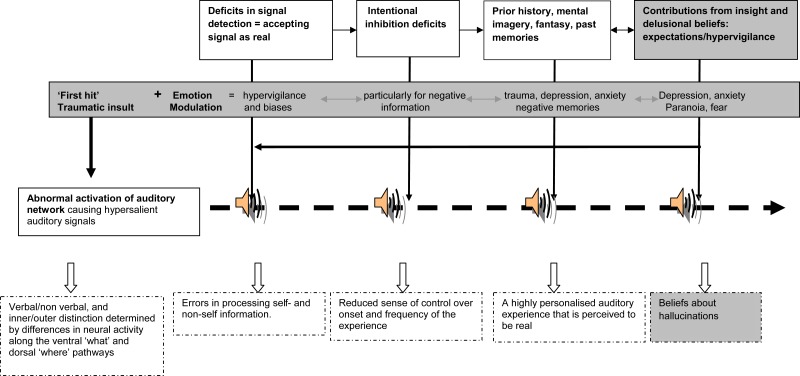Fig. 1.
Temporal unfolding of auditory hallucinations (AHs) in clinical and nonclinical populations (the boxes shaded in gray represent processing that maybe more characteristic of schizophrenia and that differentiate clinical and nonclinical AH): In this model, AH arise from an interaction between (a) signals arising from overactivation of auditory brain neural activity and (b) a range of top-down mechanisms that produce a highly complex and multidimensional experience. These top-down mechanisms include: (1) deficits in signal detection that lead to errors in processing; (2) intentional inhibition deficits that contribute to a diminished sense of control over this perceptual experience; (3) a background of expectations, imagery, and memories that provide information that is personally relevant; (4) contributions from lack of insight and delusional beliefs that provide a set of beliefs about AH; and (5) the contribution of emotions that impacts on all aspects of processing and that ensures that emotional material is processed over neutral information. This model can be used to explain variations in phenomenological features (bottom row, dotted lines), so that the severity or location of the cognitive deficits determine individual differences in the extent to which AH features are present.

